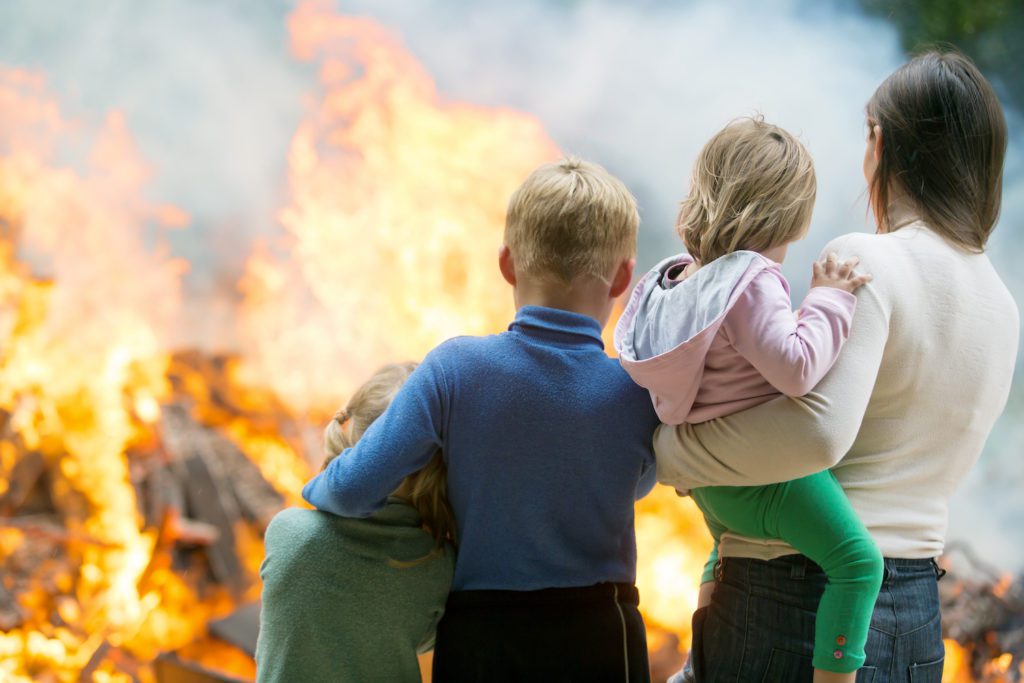According to the National Fire Protection Association (NFPA), US fire departments respond to an estimated 346,800 home fires per year which cause an average of 2,620 deaths, 11,070 fire injuries and $7.3 billion in direct property damage. Additionally, the instances of house fires increase during the winter with the greater use of space heaters and candles.
Since an ounce of preparation is worth a pound of cure, being prepared for the worst can go a long way should you fall victim to a house fire. Make sure you have the following:
- An Escape Plan: Make sure your family knows multiple ways to get out of the house in the case of fire. The Red Cross recommends as many as two paths out of every room in the house and provides this handy resource for you to use as you make your plan. Practice your escape plan with all members of your family on an annual or bi-annual basis and aim for everyone to be out and safe within two minutes.
- A Designated Meeting Place: When a fire occurs in your house, the goal is to get everyone out as quickly as possible. So you know when everyone has gotten to safety, designate a meeting place where everyone who lives in your house can gather once they have escaped. Don’t assign a location too close to the house where you may not be safe from flying debris or in the way of firefighters but make it close enough that it is easy to walk to in case anyone has been injured.
- Smoke Detectors: Smoke alarms sense abnormal amounts of smoke or invisible combustion gases in the air and can cut your risk of dying in a fire nearly in half. You should have a smoke alarm on every level of your home and outside of every bedroom, and ideally, they should be interconnected so if one goes off, all of them will sound the alarm. Test each alarm in your home monthly to make sure they are working and change the batteries twice a year (many people choose to do this when the time changes as an easy way to remember it). You should completely replace all your smoke alarms with new ones every 10 years as well.
- Carbon Monoxide Detectors: In addition to smoke detectors, also install carbon monoxide alarms in central locations on every level of your home. These alarms will alert your family to this invisible, odorless, colorless gas before it’s too late. Even a small amount of carbon monoxide can poison or kill a person if it is breathed in over a period of time – such as overnight while sleeping.
- Fire Extinguishers: Every home should also have “A-B-C” rated fire extinguishers too. Make sure every adult in the home understands how to use it, since you will have no time to learn if a fire occurs. Install them on a wall, near an exit, away from heat sources and out of reach of children. Make sure it is properly charged on a routine basis too. Most have a gauge or test button to check the pressure, and if you find it is low on pressure, damaged or corroded, replace it or have it professionally serviced. And if you ever have to use it on a fire, be sure that everyone is out of the house, the fire department has been called, the fire is small and not spreading, and your back is to an exit. If the fire doesn’t die down quickly, drop the extinguisher, and get to a safe space.
By taking these steps, you’ll be better prepared should a fire occur in your home or office. And if the worst does happen, we are ready to come to your aid and return your home or office to its original condition.

